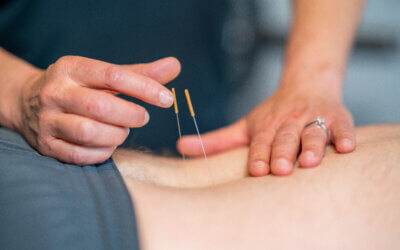Headaches every day are something the majority of people aren’t strangers to. Headaches can quickly derail a great day. For some people, headaches occur occasionally. Some people are less fortunate and experience headaches every single day. Chronic headaches happen at least 15 days a month for at least three months. Headaches come in all shapes and sizes. They can have a variety of triggers depending on the type of headache. Tension headaches are the most common type of headaches. They plague 1 in 3 men and 1 in 2 women.
What causes headaches?
Chronic headaches are complex and can be caused by a variety of triggers. These triggers can include:
- Stress.
- Anxiety.
- Depression.
- Whiplash.
- Pinched nerves.
- Caffeine withdrawal.
- Snoring.
- Obesity.
- Hangover.
- Arthritis.
- Poor posture.
- Allergies/sinus.
- Sleep disruption.
- Muscle spasms.
- Dehydration.
- Traumatic brain injury.
- Overmedicating.
Types of chronic headaches
Understanding the different types of chronic headaches is important to receive effective treatments. Common types of headaches include:
- Cluster headaches — Cluster headaches are named for their location and the timing of the experience. They happen around or behind one eye or side of the face. They also can happen as a series of headaches and can happen every day. These headaches are most common in the spring and fall. Men are more likely to experience cluster headaches than women.
- Allergy or sinus headache — People who have chronic allergies or sinus issues may also experience headaches. These headaches are felt in the sinus region of the head.
- Tension/stress headache — Tension headaches can be experienced by anyone. They can cause a dull, aching sensation all over the head. They are triggered by stress.
- Caffeine headache — If you consume too much or too little caffeine, you could experience caffeine headaches. Caffeine can also trigger migraine headaches.
- Hormone headaches — Hormonal fluctuations due to menstruation, birth control and pregnancy can have an effect on estrogen production levels. These fluctuations can make women more likely to experience hormone headaches than men.
- Pinched nerve/cervicogenic headache — Neck issues, such as a pinched nerve, cause cervicogenic headaches. These headaches can cause neck stiffness and headaches on one side of the head. This pain originates from the base of the skull.
- Migraine headache — Migraines can have a significant impact on your life. They can be experienced on one side of the head. They can cause throbbing pain, which can be accompanied by nausea, vomiting, light and sound sensitivity, and visual auras. Women are more likely to experience migraine headaches. People who have post-traumatic stress disorder can have an increased risk of developing migraines.
- Post-traumatic headache — After trauma or injury, it is possible to experience a post-traumatic headache. Pain from these headaches can be similar to a tension or migraine headache. They can last six to 12 months after the event.
- Hypertension headache — If you have high blood pressure, a hypertension headache could be a warning sign that you need to seek emergency medical attention. Dangerously high blood pressure levels cause this type of headache. They have a pulsing sensation, felt in one or both sides of the head, that can worsen with activity.
How to relieve everyday headaches
Even chronic headaches can be treated effectively. Treatments to help everyday headaches include:
- Heat and cold therapy.
- Massage.
- Stress management.
- Posture improvement.
- Over-the-counter medication.
- Exercise and stretching.
- Adequate sleep.
- Diet.
- Physical therapy.
- Staying hydrated.
How can physical therapy help alleviate chronic headaches?
Chronic, everyday headaches can leave you desperate for help if other at-home treatments don’t provide lasting relief. Physical therapy can be a beacon of hope in despair. Physical therapy can help address the root cause of your headaches and provide you with relief. Treatments can include:
- Manual therapy — Manual therapy techniques like soft tissue mobilization and joint mobilization can not only help release muscle knots and tension but also help improve flexibility in the neck and shoulders. This can help reduce muscle spasms. Manual therapy can help reduce headache frequency and intensity.
- Electrical stimulation — Electrical stimulation with a TENS unit can help provide pain management. Electrical currents pass through a specific area of the body through electrodes, disrupting pain signals, reducing muscle tension and promoting relaxation.
- Dry needling — Dry needling is a physical therapy technique used by certified physical therapists. Thin, sterile needles are placed into trigger points in the soft tissue. This can help promote muscle relaxation and improve circulation.
Physical therapy can help provide you with relief from the length, intensity or frequency of your headaches. It may also help lower your reliance on over-the-counter pain relievers. With physical therapy, you can see a boost in your mobility and function from fewer potential muscle spasms and tensions causing your everyday headaches. No matter the underlying cause of your everyday headaches, physical therapy can help improve your quality of life.
Break free from the shackles of everyday headaches with Continuum Wellness
At Continuum Wellness, we understand the impact experiencing headaches every day can have on your life. Our team of expert physical therapists is dedicated to helping you find relief and regain control over your life. We can help find and address the root cause of your headaches. Together, we can progress toward managing your headaches effectively. We strive to promote your physical well-being and your overall quality of life.
Contact our team today for more information or to schedule an initial appointment.



